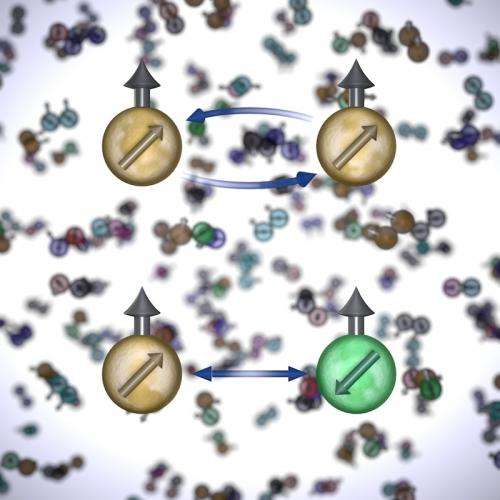August 25, 2014 report
Best of Last Week – Evidence of quark-gluon interactions, new portable device hack and why we may never live forever

(Phys.org) —With summer drawing to a close, research is starting to heat up. Last week, physicists at the Relativistic Heavy Ion Collider used supercomputer calculations to offer evidence that particles predicted by the theory of quark-gluon interactions are being produced in heavy-ion collisions—it's the first such evidence found and it should offer scientists a way to mimic condition that existed 14 billion years ago. Also, researchers at the Joint Institute for Laboratory Astrophysics in Denver Colorado have found the first direct evidence of "spin symmetry" in atoms. The team used an ultra-stable laser and their findings could lead to a better understanding of superconductivity and colossal magneto-resistance. Meanwhile, another team at Lawrence Berkeley National Laboratory demonstrated ultra low-field nuclear magnetic resonance using Earth's magnetic field—it was a proof of concept experiment looking into ways to sense the interior chemical and physical attributes of an object from a distance, without sampling or encapsulating it. And in another first, physicists at Yale University have succeeded in chilling the world's coolest molecules—they cooled samples of strontium monofluoride, to 2.5 thousandths of a degree above absolute zero using a laser isolating and cooling process—it's the lowest temperature ever achieved by scientists for a molecule.
In news of a completely different nature, researchers discovered a hack that allows access to personal data on Windows, Android and iOS devices—in testing they found they could access the devices between 82 and 92 percent of the time, which meant they were able to hack the accounts of services used on those devices, and frustratingly, there doesn't appear to be a way to block it. In other scary news, a team of researchers in Denmark has found a link between the common antibiotic clarithromycin and heart deaths—it's used to treat a wide variety of bacterial infections.
More optimistically, a group working at Michigan State University has found a way to create a new type of solar collector that doesn't block the view—because it's clear. And if you've been wondering why global warming is taking a break, a team in Switzerland thinks it's because of El Niño/La Niña and solar fluctuations.
And finally, if you were hoping to be part of the generation of people that live forever, you may be out of luck as a team of researchers has concluded that living forever may never be possible—sadly, they think they've found evidence that we humans have reached a plateau.
© 2014 Phys.org





















